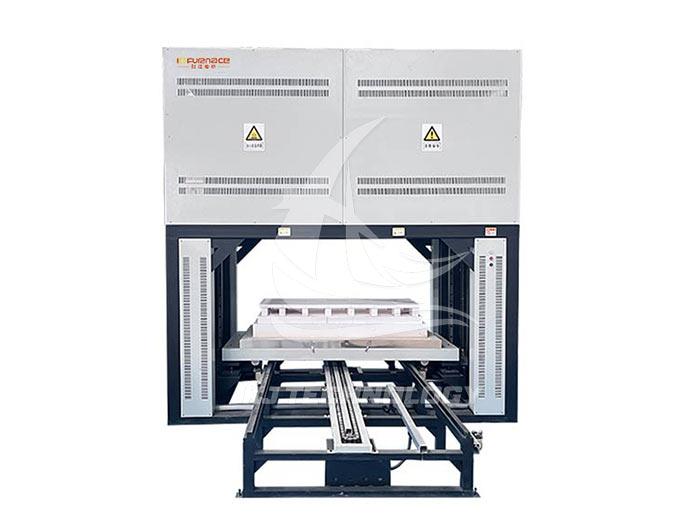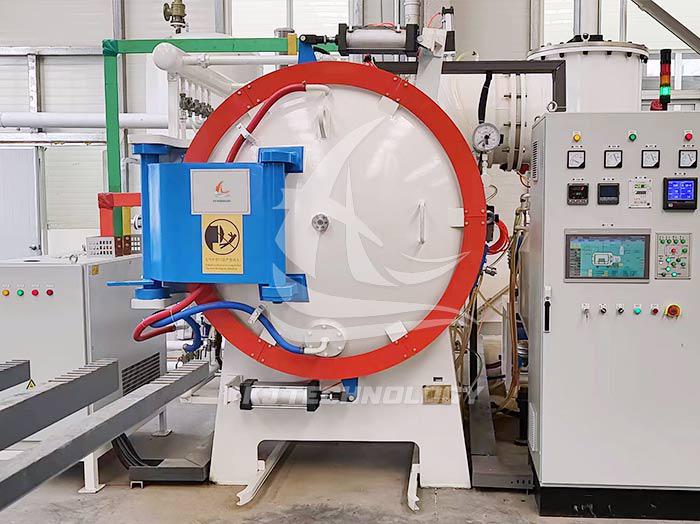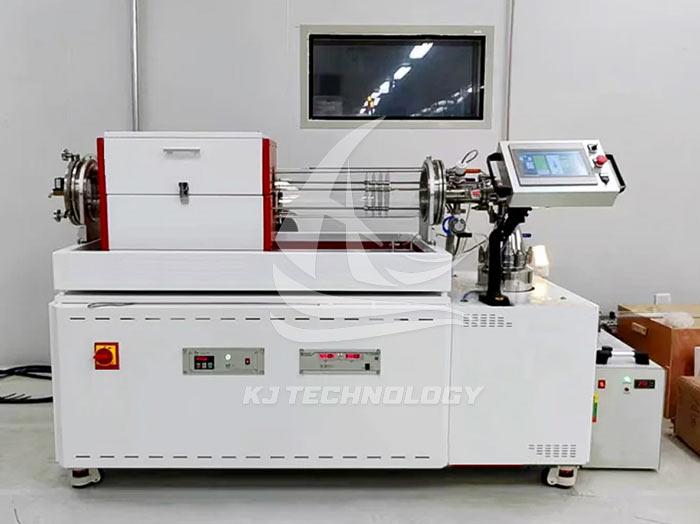Daily maintenance of graphite vacuum furnace for laboratory use
 07-22-2025 Author: KJ technology
07-22-2025 Author: KJ technology
The daily maintenance of graphite vacuum furnaces used in laboratories is key to ensuring stable operation of equipment, extending their service life, and ensuring experimental safety. The following provides a detailed introduction to the daily maintenance points of laboratory graphite vacuum furnaces, including cleaning and maintenance, sealing inspection, vacuum system maintenance, heating system maintenance, cooling system maintenance, electrical system inspection, safety protection and recording, regular calibration, and professional maintenance.
1. Cleaning and maintenance
Furnace cleaning
Regular cleaning: After each experiment, wait for the furnace to cool to room temperature and use a soft bristled brush or vacuum cleaner to remove any residue (such as graphite debris, oxides, etc.) from the furnace to avoid impurities evaporating or reacting with graphite at high temperatures, which may affect the furnace life and experimental results.
Deep cleaning: Conduct a deep cleaning once a month, using a dust-free cloth dipped in a small amount of alcohol or specialized cleaning agent to wipe the inner wall of the furnace and remove stubborn stains. Be careful to avoid using corrosive solvents to prevent damage to graphite materials.
Shell cleaning
Wipe the furnace shell with a dry cloth to keep the surface clean and prevent dust accumulation from affecting heat dissipation. If there is oil or stubborn stains on the outer shell, neutral cleaning agent can be used to wipe it, but it is necessary to avoid the cleaning agent from penetrating into the interior of the equipment.
2. Sealing inspection
Furnace door seal
Appearance inspection: Before each use, check whether the furnace door sealing ring is intact, whether there is aging, cracking or deformation. If the sealing ring is found to be damaged, it should be replaced immediately to ensure good sealing after the furnace door is closed.
Sealing test: Conduct a sealing test once a month, close the furnace door and start the vacuum pump to observe the rate of vacuum degree increase. If the vacuum degree rises slowly or cannot reach the set value, it is necessary to check whether there are leakage points in the sealing ring or furnace body.
Pipeline sealing
Check if the connections of vacuum pipes, pneumatic valves, etc. are loose or leaking. Apply soapy water to the connections and observe if any bubbles are generated. If a leak is found, it is necessary to tighten the connecting bolts or replace the seals.
3. Vacuum system maintenance
Vacuum pump maintenance
Oil level check: Check the oil level of the vacuum pump weekly to ensure that the oil level is within the range marked on the oil window. If the oil level is too low, it is necessary to replenish the same type of vacuum pump oil in a timely manner; If the oil level is too high, excess oil needs to be drained.
Oil quality replacement: Replace the vacuum pump oil every 3-6 months, and adjust the specific cycle according to the frequency of use and oil quality. When replacing, it is necessary to thoroughly drain the old oil and clean the inside of the pump body to prevent impurities from remaining.
Pump body cleaning: Regularly clean the vacuum pump inlet filter to prevent dust or debris from entering the pump body and affecting its performance.
vacuum gauge calibration
Calibrate the vacuum gauge every six months to ensure accurate readings. The calibration method can refer to the equipment manual or use a standard pressure gauge for comparison.
4. Heating system maintenance
Heating element inspection
Appearance inspection: Check the heating element (such as graphite heating element) every month for integrity, fracture, deformation, or oxidation. If damage is found, it should be replaced in a timely manner to avoid affecting heating efficiency.
Connection inspection: Check whether the connection between the heating element and the electrode is firm, whether there is looseness or poor contact. If the connection is poor, it is necessary to tighten the bolts or re weld.
Thermocouple calibration
Calibrate the thermocouple every six months to ensure accurate temperature measurement. The calibration method can refer to the equipment manual or use a standard thermometer for comparison.
5. Cooling system maintenance
Cooling water inspection
Water quality requirements: Ensure that the cooling water is clean, free of impurities or corrosive substances. It is recommended to use deionized water or distilled water, and avoid using tap water or hard water to prevent scale accumulation.
Water flow monitoring: Regularly check the cooling water flow and pressure to ensure stable water flow. If there is insufficient water flow or abnormal pressure, it is necessary to check whether there is a malfunction in the water pump, water pipe or valve.
Cleaning of radiator
Clean the dust and debris on the surface of the radiator every month to maintain good heat dissipation. When cleaning, compressed air can be used to blow or a soft bristled brush can be used to wipe, avoiding water washing to prevent short circuits.
6. Electrical system inspection
Power line inspection
Check the power supply circuit every month for any damage or aging. If damage to the circuit is found, it should be replaced in a timely manner to prevent short circuits or leakage.
Control system testing
Regularly test the various functions of the control system (such as temperature control, vacuum control, program operation, etc.) to ensure stable equipment operation. If control abnormalities are found, it is necessary to check whether there are faults in the sensors, controllers, or software.
7. Security protection and records
safety protection
Ensure good grounding of the equipment to prevent leakage or static electricity accumulation.
Equip fire extinguishers and other firefighting equipment around the equipment, and regularly check their effectiveness.
Operators are required to wear personal protective equipment such as protective gloves and goggles to prevent damage from high temperatures or chemical substances.
Maintain records
Establish detailed equipment maintenance records, including maintenance dates, maintenance content, replacement parts, and other information. Maintaining records helps track device status and promptly identify potential issues.
8. Regular calibration and professional maintenance
periodic calibration
Every year, professional institutions are invited to conduct comprehensive calibration of equipment, including key parameters such as vacuum degree, temperature, and pressure, to ensure that equipment performance meets standard requirements.
Professional maintenance
According to the usage of the equipment, regularly invite professional technicians for in-depth maintenance, including internal cleaning, component replacement, system optimization, etc., to extend the service life of the equipment.








